Case Study
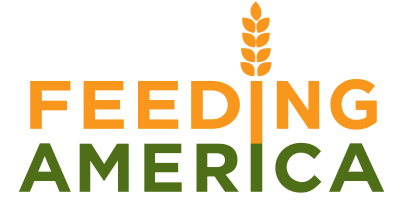
Find Out…
How we helped Feeding America develop a data-based strategy for building marketing and fundraising capacity among its food banks.
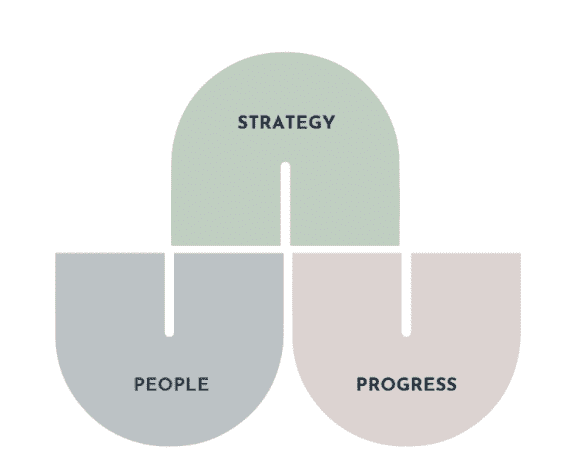
The Challenge
A year into the COVID-19 pandemic, the country was facing unprecedented levels of food insecurity and there was an outpouring of donor support to Feeding America member food banks. However, like so many other aspects of life that changed with the pandemic, this support didn’t follow traditional giving patterns. For the first time, online giving surged past direct mail giving for the Feeding America network.
As a result, Feeding America knew they needed to double down on ensuring every member food bank had what they needed to make the most of this opportunity and evolve with donor giving preferences. They turned to Prosper Strategies for support.
While Feeding America wanted to be at the forefront of empowering member food banks across the country to become best-in-class, digital-first fundraising organizations, they also recognize that every food bank is unique. There are great differences across the network in fundraising resources, food bank size, demographics and communities served. Rather than taking a prescriptive approach to helping food banks strengthen their digital fundraising capacity, they wanted to put food bank member needs at the center and take a responsive approach. They worked with us to conduct a network-wide study to hear directly from food banks about the sorts of resources and services that would be most helpful to them as they moved into a new future of digital giving.
We leveraged our Nonprofit Strategy System™ and our Shared Power Strategy™ philosophy to guide our work with Feeding America.

People
All of our work with Feeding America was centered on engaging and hearing directly from food banks, so we leveraged our Shared Power Strategy™ philosophy to design a process that maximized the input of members across the country.
First, we assembled a stakeholder committee made up of both Feeding America National Office staff and food bank representatives. Prosper collaborated with this committee to establish learning objectives and guidelines for a study of network needs when it came to direct marketing fundraising.
We knew that it was critically important not just to hear from food banks that were excelling at online fundraising or those that were experiencing challenges. Instead, we needed to hear from a broad swath of the network to understand the tools and resources that were needed by food banks at all different stages in their digital fundraising journeys. This led to the design of a survey that would allow a representative sample of the network’s food banks to share their perspectives, while also illuminating notable differences between the needs of different types of food banks, such as those already working with a direct marketing partner or those handling all fundraising in-house. The sampling also accounted for the geographic location of the food banks and the size of their fundraising programs.
Once the survey was designed, we wanted to test its useability before distributing it to the entire food bank membership, so we administered it to a small group of food bank direct marketing representatives who piloted it and shared feedback before it was sent to the full sample.
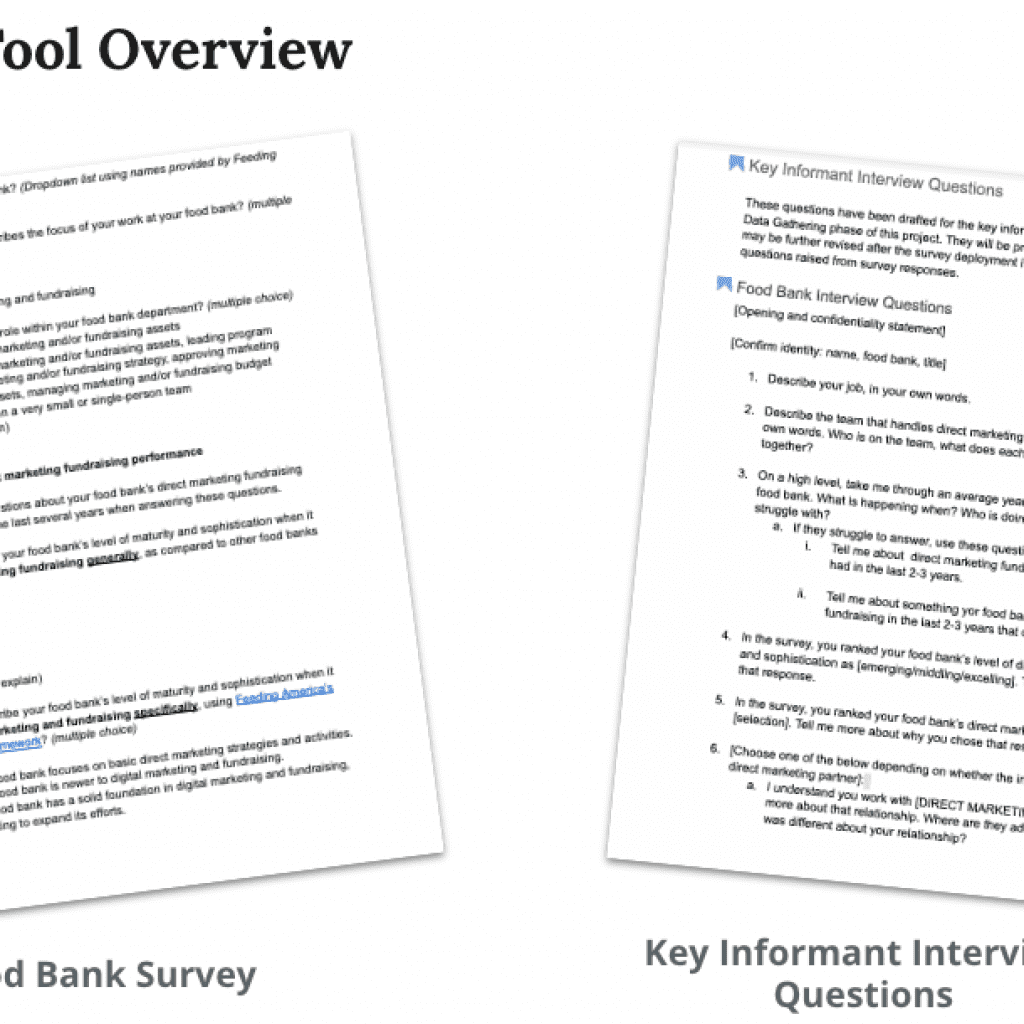
While the survey data would be valuable, we also wanted to gather the in-depth perspectives of a subset of food banks that represented various aspects of the network, based on size, location and sophistication of fundraising programs. We conducted interviews with a select group of food banks where we were able to go far deeper into how each of their organizations handled fundraising, and the sorts of resources and services they wanted most from Feeding America. Additionally, many of the food banks had established partnerships with direct marketing agency partners who we knew would have insights, and we interviewed those partners to understand what resources they felt could be helpful to the network, without duplicating their efforts.
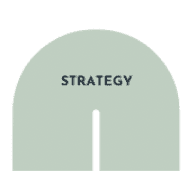
Strategy
The results of our People phase evidenced several key gaps separating the top-performing food bank direct marketing fundraising programs from others.
For example, we found that many food banks did not have established digital strategies, email programs or digital advertising programs to support their online fundraising. We also found many faced challenges with donor stewardship and could use support with brand guidelines and identifying online fundraising platforms. Additionally, a number of food bank members requested support identifying and vetting direct marketing fundraising vendors.
Because a key goal of the project was to identify the areas where Feeding America could create the greatest impact for the network as a whole, these gaps would prove important in prioritizing what resources should be developed by Feeding America.
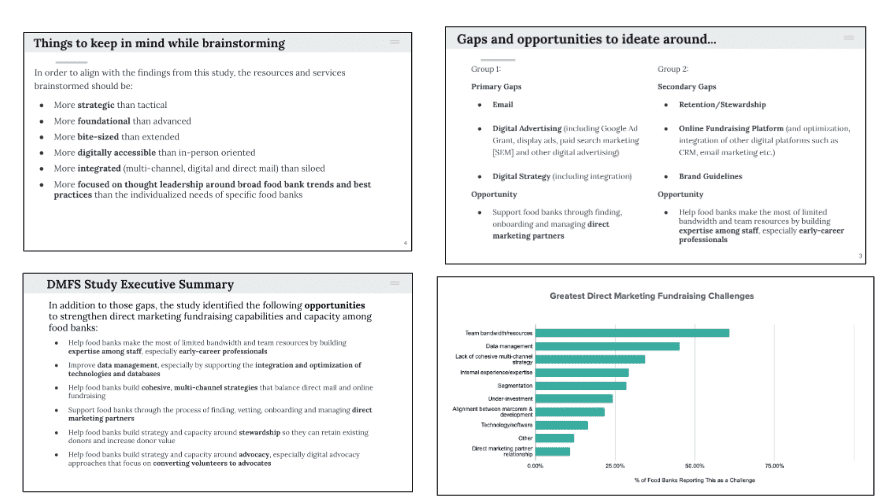
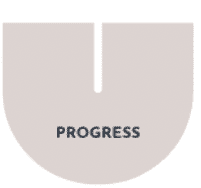
Progress
We used this information to develop a shortlist of priority resources and tools that Feeding America could create in order to address the identified gaps and strengthen direct marketing fundraising capacity across the network. We then vetted this shortlist with the committee of food banks and Feeding America representatives we had developed in the People phase, and used their feedback (and additional brainstorming) to narrow in on a plan for the resources and services Feeding America’s Network Fundraising Services group would develop.
Results
With so many food banks expressing a need for more guidance in finding and vetting direct marketing partners, Feeding America decided to first prioritize the development of a direct marketing partner directory that would help food banks select the right direct marketing partner for them. Prosper Strategies took the lead on developing this directory, along with an accompanying set of resources to guide food banks through the process of building effective direct marketing fundraising agency partnerships. Other priority resources that were identified as a result of our study (such as digital marketing trainings) are being developed internally by Feeding America, or in partnership with other subject matter experts. This inclusive approach to charting a course for building direct marketing fundraising capacity among food banks has been well received by the network, and food banks are beginning to experience the benefits of the new resources and services that are rolling out as a result.